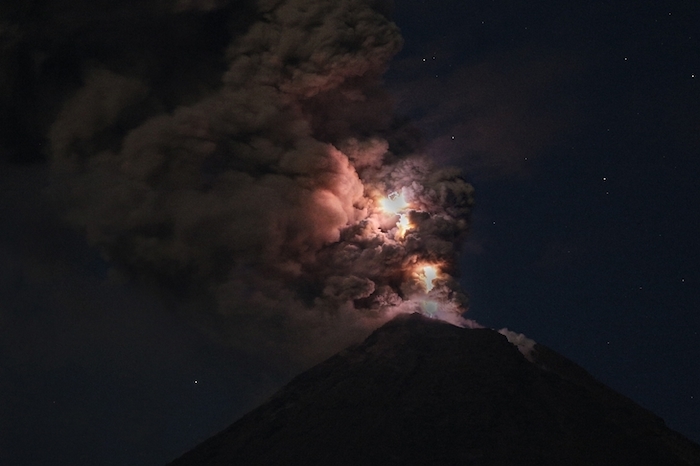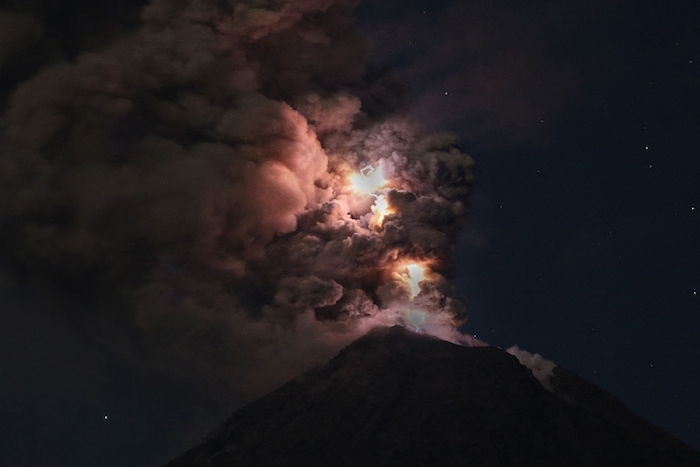.
VOLCANIC LIGHTNING IN MEXICO: In southern Mexico, the Colima volcano has been in a state of near-constant activity since 1994. It's not unusual for several explosions to occur in a single day, throwing plumes of ash 2 or 3 kilometers into the sky. On Oct. 28th, Spaceweather.com reader Thorsten Boeckel was on hand for one of those eruptions--a nighttime blast--and he photographed a violent display of volcanic lightning:

This photos shows a volcanic lighting during the eruptions. This mighty stroke on the first photo illuminated the ash discharge which rose up may 1,5 kilometer over the crater of the 3860m high Colima Volcano. Pure fascination!!!

"This mighty stroke illuminated the ash discharge, which rose up over the crater of the 3860m high Colima Volcano," he says. "Pure fascination!"
Researchers have long known that volcanic eruptions produce strong lightning. Findings published in a 2012 Eos article reveal that the largest volcanic storms can rival massive supercell thunderstorms in the American midwest. But why? Volcanic lightning is not well understood.
Lightning is nature's way of correcting an imbalance of electric charge. In ordinary thunderstorms, one part of a thundercloud becomes positively charged, and another part becomes negatively charged. This charge comes from collisions between particles. Droplets of water and crystals of ice rub together, creating static electricity in much the same way as woolen socks rubbed against carpet. Lightning arcs between charge-separated regions.
Something similar must be happening inside volcanic plumes. One hypothesis holds that catapulting magma bubbles or volcanic ash are themselves electrically charged, and by their motion create charge-separated areas. Another possibility is that particles of volcanic ash collide with each other and become charged through triboelectric rubbing. In short, no one knows. It is a beautiful (and terrifying) mystery.
Quelle: Spaceweather
4630 Views
